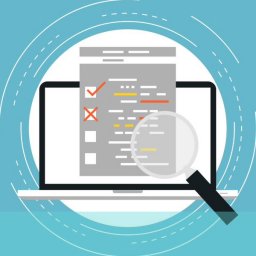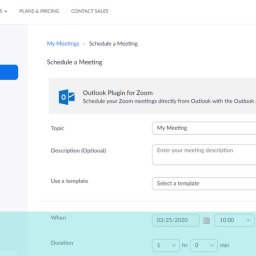
UX Research appears throughout our blog. You’ll spot almost everything there is to do with UX Research including: interview guides, strategies, reporting, creating collaborations, building teams, and everything in between.
And, of course, you should—that’s what we do after all. But for those who aren’t experienced in the field or trying to get a sensible overview of what UX Research involves—to see if it’s a good fit for your design development—here’s our stripped out simple guide, covering the basics we think you need to know.
UX Research Definition
“UX Research (user experience) is a systematic study of target users that uncovers issues and insights relevant to the design process.”
In simple language, UX Research helps to identify the elements that make your product as efficient and enjoyable as it can be. It needs to satisfy the needs of the company stakeholders and provide a journey, or experience, that’s as simple and as desirable as possible for its users.
What Is UX Research?
UX Research is carried out in a variety of ways, using all sorts of different methods. We’ll look at a selection of those later on, but the reason for all that research is to gather facts and information that designers use to deliver a better product for those who need it.
Why Do We Need UX Research Data?
Humans are designed to make assumptions, known as unconscious biases, to make getting through our daily routines easier and less complicated. However, those unconscious biases involve far too much guesswork, so to limit those assumptions that lead to bad choices, it’s better to gather the opinions and behaviours of the people who will use your products to decide precisely what we need to do.
What Is A UX Researcher?
UX Researchers develop plans with clear objectives into the data required, how to uncover and collect it, and present it to the designers. That means writing usability screeners (questions required to pinpoint target users for the project), discussion guides, data collection plans, analysing information, and presenting their findings to designers in an appropriate medium. It involves a great deal of strategic thinking and operation.
A UX Researcher’s role differs from company to company. Ultimately, they’re experts in handling data and analytics, human behaviour, and behavioural economics—with a little anthropology, sociology, and psychology thrown in to boot!
UX Research Methodologies
The methodology UX24/7 uses to deliver a full-service design cycle looks like this:
- The first stage identifies the problems and opportunities of the product or feature in development. Analysing a project to determine its needs might seem simple at first, but this is where those unconscious biases come into play. A good researcher will wipe all pre-existing ideas and thoughts out of their mind to start with a completely blank slate.
- We translate the outcomes of the discovery stage research into information that designers use to improve the product’s performance.
- With the next stage of designs, we provide ‘evaluative research’. Typically, this presents as ‘usability testing’ but can be carried out using various other methods.
- Once live, the product is optimised using ‘qualitative research’.
Various practices determine the best means of gathering specific datasets for each unique project through these four stages.
Choosing the best options for a project is where the UX Researcher comes into their own. They build the plan and strategy using their vast experience and understanding of those systems, what they deliver, and how they affect outcomes.
Discovery methods and activities examples:
- Field studies
- User interviews
- Stakeholder interviews
- Diary studies
- Determine UX metrics
- Locate relevant data sources
Generative methods and activities examples:
- Task analysis
- Design review
- Persona building
- Journey mapping
- Writing user stories
- Card sorting
- Design diversity exploration
- Competitive analysis
Evaluative methods and activities examples:
- Qualitative usability testing
- Accessibility evaluations
- Benchmark testing
- User group outreach
- Usability tracking over time
Optimisation methods and activities examples:
- Usability bug review
- Feedback review
- Search-log analysis
- Surveys
- FAQ review
- Analytics review
Qualitative And Quantitative Research – What’s The Difference?
There are two subsets of UX Research: qualitative and quantitative. One deals predominantly in facts and figures that are easier to catalogue, where the other provides insights into ‘why’ users behave as they do.
Qualitative Research
The information gathered by this type of research comes from interviews and ethnographic field studies (happening where the product exists in the real world). This is how our researchers get an in-depth understanding of why users act how they do.
Researchers can interview users about why they missed a link or call to action or how they feel about the product’s operation, presentation, or navigation to gather qualitative data.
Alternatively, usability testing monitors each user’s stress responses while using the product.
Another qualitative research method, user shadowing, in UX Research allows you to observe participants while using the product, uncovering their joys and frustrations, positive and negative reactions, and how they react to each feature.
Even though the data tends to be non-numeric and a little trickier to compile, the opinions, motivations, and feelings behind user behaviour regularly provide information that transforms the product.
Quantitative Research
Quantitative research methods are more structured and generally easier to categorise and process. The data from surveys, questionnaires, etc., provide data on user actions, testing the assumptions drawn from other research methods. This data reveals patterns, allowing designers to streamline and personalise the project for their target user.
By utilising both qualitative and quantitative research, UX Researchers can paint a more complete picture of user behaviour, action, and product performance.

How To Organise A UX Research Project
Here, we explain some of the steps involved in a UX Research project as opposed to providing you with a complete UX Research ‘how to’ guide. As mentioned previously, each project will lend itself to specific and appropriate practices. However, for the sake of building understanding into the UX Research process, for those new to the practice, here are a few suggestions into the key steps and how to approach them.
1. Defining the problem statement
Your research plan starts with a problem statement. This clarifies what you’re trying to achieve from the research. It includes gathering details using stakeholder interviews, team sessions, and any existing, relevant data analysis. The problem statement explains precisely what the project is about, including any background information that defines the objectives the research needs to deliver.
2. Determine research objectives
With the problem statement clarifying what the research needs to achieve, the objectives further detail how that will happen and why you chose those methods. Your objectives will also set out what you expect to uncover.
With so many avenues of information to explore, it’s essential not to get swept up in the process and to retain focus on the end result; UX Research is there to deliver a better product, after all.
Ask yourself,
- Who are we designing for?
- What do they need?
- What problems do they face?
- What are the pain points of the product?
- Why might the target market avoid using the product?
- How are we going to accrue the information?
- How will it affect the design?
- How will we utilise the new information?
3. Clarifying the optimum UX research methods
We looked at a sample of the UX Research methods earlier. Each stage will have specific goals, which will be better suited to a particular type of research. When choosing them, you’ll have to consider the process, the constraints, the data delivered, your resources, and of course, your budget and timeline.
Clearly defining objectives will guide you towards the best process for the outcome you need.
4. Recruiting UX research participants
You’ve discussed what your target user looks like while determining your objectives, which should guide you into who’s a good fit for your research and investigation. How many will you need to provide an accurate representation of a complete market? Do you have a pool of users you can tap into, or will you have to hire external participants to uncover your ideal data?
You must make sure that they’re appropriate to the product and represent your target user persona wherever they come from.
5. Creating a brief
With objectives outlined and methods decided, the next step is to draw up a guide for each research session. This will outline how your interviews, field studies, and face-to-face activities will operate. The brief will keep you focussed on what you need to achieve and which questions you need to ask to reveal the essential data.
A brief needs an introduction, the research questions, and an outgoing statement; the introduction informs participants of what to expect from the session, and the outgoing message will outline what happens next. It’s also a great opportunity to thank them for their time and efforts.
6. The timeline
The timeline is defined by the stakeholders’ expectations and the realistic nature of gathering participants and carrying out each research activity. As unpredictable as that sounds to pinpoint, a reasonable estimation allows each party to make plans for other parts of the product’s design and delivery.
7. Presentation
With all that new data, you want to ensure the best methods to deliver what you’ve found. The results of your research are what designers need, and presenting the crucial details clearly and concisely is essential.
You also have to decide how often you’ll present, keeping partners up-to-date and informed of your progress. Presentations hold value at every stage. Whether managed face-to-face or using documents and digital delivery, they are opportunities for all parties to learn and react to your UX Research.
Summing up…
There are plenty of UX Research resources available and for every method and technology in the industry. Take a look through our blog, for example. We cover all kinds of information-rich topics, helping our clients understand the impact of every corner of our operation.
And if you can’t find what you’re looking for, we’re here and happy to help. Drop us a line or give us a call, and we’ll give you what you need, wherever we can. We might even write a blog about it!
If you would like to know more about UX Research or Design Research, email us at hello@ux247.com.


















[…] Related article: A Beginners Guide To UX Research […]